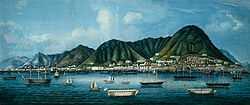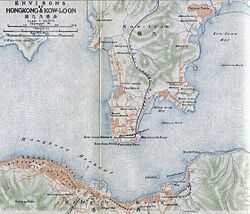Linear settlement


In geography, a linear settlement is a (normally small to medium-sized) settlement or group of buildings that is formed in a long line.[1] Many follow a transport route, such as a road, river, or canal, though some form due to physical restrictions, such coastlines, mountains, hills or valleys, as in the case of Victoria, Hong Kong. Linear settlements may have no obvious center, such as a road junction or green.[2] Linear settlements have a long and narrow shape. In the case of settlements built along a route, the route probably predated the settlement and then the settlement grew up at some way station or feature, growing along the transport route. Often, it is only a single street with houses on either side of the road. Mileham, Norfolk, England is a good example of this. Later development may add side turnings and districts away from the original main street. Places such as Southport, England developed in this way.
A linear settlement is in contrast with ribbon development, which is the outward spread of an existing town along a main street.
Linear villages
A linear village[3] or a chain village[4] is a village that is also a linear settlement.